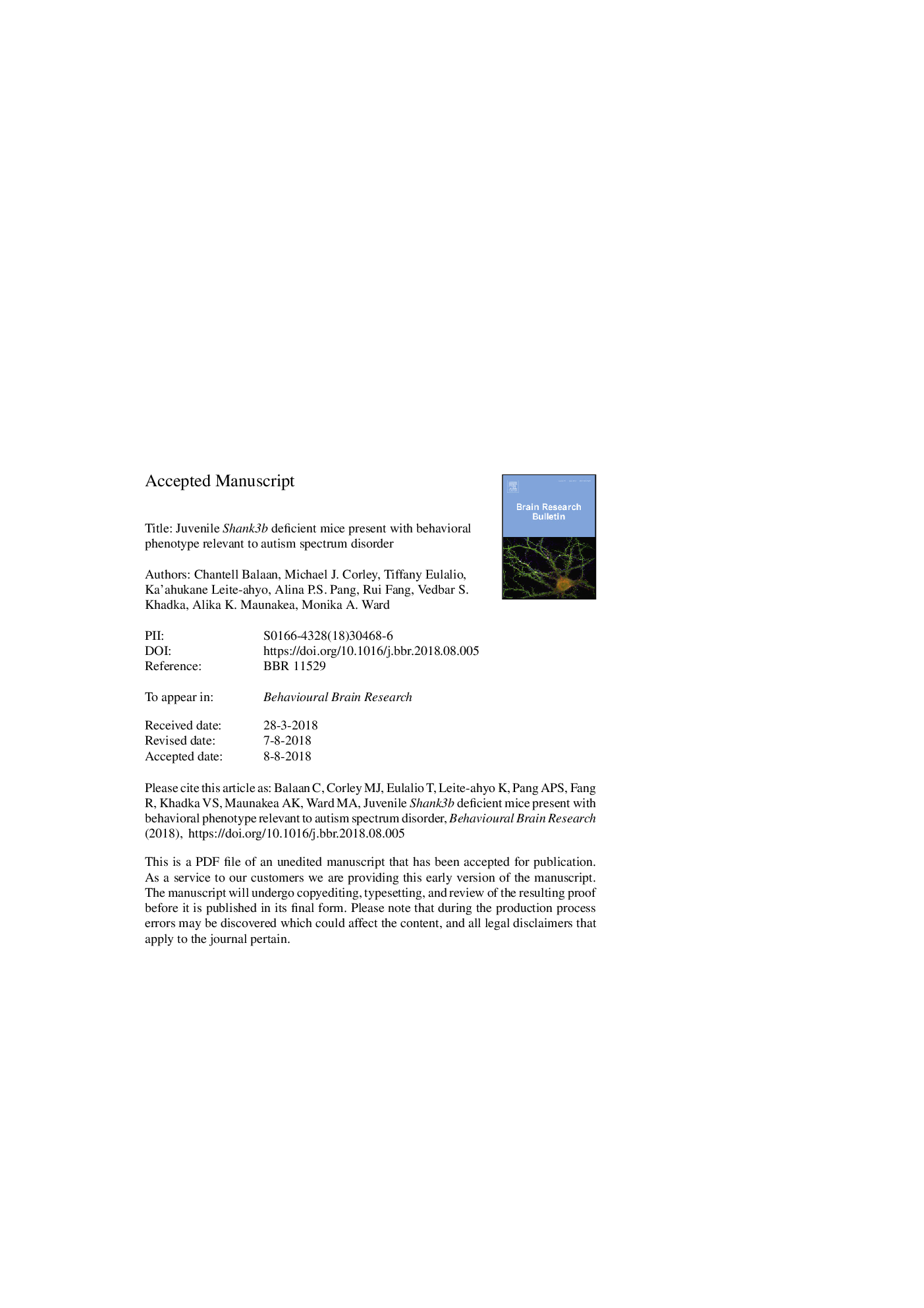| Article ID | Journal | Published Year | Pages | File Type |
|---|---|---|---|---|
| 10138265 | Behavioural Brain Research | 2019 | 35 Pages |
Abstract
Autism spectrum disorder (ASD) is a pervasive, multifactorial neurodevelopmental disorder diagnosed according to deficits in three behavioral domains: communication, social interaction, and stereotyped/repetitive behaviors. Mutations in Shank genes account for â¼1% of clinical ASD cases with Shank3 being the most common gene variant. In addition to maintaining synapses and facilitating dendritic maturation, Shank genes encode master scaffolding proteins that build core complexes in the postsynaptic densities of glutamatergic synapses. Male mice with a deletion of the PDZ domain of Shank3 (Shank3B KO) were previously shown to display ASD-like behavioral phenotypes with reported self-injurious repetitive grooming and aberrant social interactions. Our goal was to extend these previous findings and use a comprehensive battery of highly detailed ASD-relevant behavioral assays including an assessment of mouse ultrasonic communication carried out on key developmental days and male and female Shank3B KO mice. We demonstrate that ASD-related behaviors, atypical reciprocal social interaction and indiscriminate repetitive grooming, are apparent in juvenile stages of development of Shank3B KO mice. Our findings underscore the importance of utilizing Shank mutant models to understand the impact of this gene in ASD etiology, whichmay enable future studies focusing on etiological gene-environment interactions in ASD.
Related Topics
Life Sciences
Neuroscience
Behavioral Neuroscience
Authors
Chantell Balaan, Michael J. Corley, Tiffany Eulalio, Ka'ahukane Leite-ahyo, Alina P.S. Pang, Rui Fang, Vedbar S. Khadka, Alika K. Maunakea, Monika A. Ward,
